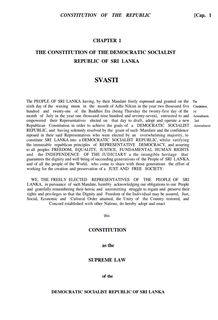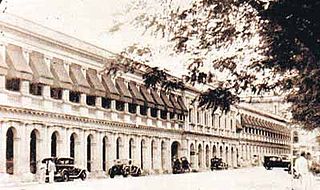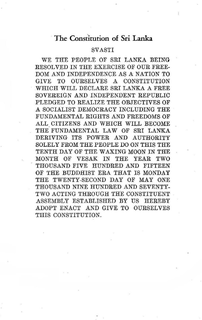Related Research Articles

A senate is a deliberative assembly, often the upper house or chamber of a bicameral legislature. The name comes from the ancient Roman Senate, so-called as an assembly of the senior and therefore considered wiser and more experienced members of the society or ruling class.
A member of parliament (MP) is the representative in parliament of the people who elect them. MPs may represent an electoral district (constituency) or be selected from an electoral list. In many countries with bicameral parliaments, this term refers only to lower house and upper house members. The terms congressman/congresswoman are equivalent terms used in other jurisdictions. The term parliamentarian is always used for members of Parliament, but this is always used to refer to elected government leaders such as senator in the United States. The term is also used to the characteristic of performing the duties of a member of a legislature, for example: "The two party leaders often disagreed on issues, but both were excellent parliamentarians and cooperated to get many good things done."

The President of Sri Lanka is the head of state, chief executive, and de jure head of government of the Democratic Socialist Republic of Sri Lanka. The president is the chief executive of the union government and the commander-in-chief of the Sri Lanka Armed Forces.

The Parliament of the Democratic Socialist Republic of Sri Lanka is the supreme legislative body of Sri Lanka. It alone possesses legislative supremacy and thereby ultimate power over all other political bodies in the island. It is modeled after the British Parliament.

The Governor-General of Ceylon was the representative of the Ceylonese monarch in the Dominion of Ceylon from the country's independence in 1948 until it became the republic of Sri Lanka in 1972.

The State Council of Ceylon was the unicameral legislature for Ceylon, established in 1931 by the Donoughmore Constitution. The State Council gave universal adult franchise to the people of the colony for the first time. It replaced the Legislative Council of Ceylon, the colony's original legislative body.

The Constitution of the Democratic Socialist Republic of Sri Lanka has been the constitution of the island nation of Sri Lanka since its original promulgation by the National State Assembly on 7 September 1978. As of August 2020 it has been formally amended 20 times.
In Sri Lanka, the Cabinet of Ministers is the council of ministers that form the central government of Sri Lanka. The body of senior ministers responsible and answerable to the Parliament of Sri Lanka. The President is a member of the cabinet and its head.

The Speaker of the Parliament of the Democratic Socialist Republic of Sri Lanka is the presiding officer of the chamber. The current Speaker of the Parliament is Mahinda Yapa Abeywardena, in office since 20 August 2020. The Speaker fulfills a number of important functions in relation to the operation of the House, which is based upon the British Westminster Parliamentary system.

The Senate was the upper chamber of the parliament of Ceylon established in 1947 by the Soulbury Commission. The Senate was appointed and indirectly elected rather than directly elected. It was housed in the old Legislative Council building in Colombo Fort and met for the first time on 12 November 1947. The Senate was abolished on 2 October 1971 by the eighth amendment to the Soulbury Constitution, prior to the adoption of the new Republican Constitution of Sri Lanka on 22 May 1972. In 2010 there were proposals to reintroduce the Senate.

The House of Representatives was the lower chamber of the parliament of Ceylon established in 1947 by the Soulbury Constitution. The House was housed in the old State Council building in Galle Face Green, Colombo and met for the first time on 14 October 1947. The First Republican Constitution of Sri Lanka, adopted on 22 May 1972, replaced the House of Representatives with the unicameral National State Assembly.

The Legislative Council of Ceylon was the legislative body of Ceylon established in 1833, along with the Executive Council of Ceylon, on the recommendations of the Colebrooke-Cameron Commission. It was the first form of representative government in the island. The 1931 Donoughmore Constitution replaced the Legislative Council with the State Council of Ceylon.
House of Representatives is the name of legislative bodies in many countries and sub-national entitles. In many countries, the House of Representatives is the lower house of a bicameral legislature, with the corresponding upper house often called a "Senate". In some countries, the House of Representatives is the sole chamber of a unicameral legislature.

The National State Assembly (NSA) was the legislative body of Sri Lanka established in May 1972 under the First Republican Constitution. The assembly was introduced by Prime Minister Sirimavo Bandaranaike under the United Front Government replacing the Parliament of Ceylon, a bicameral arrangement set up with the Soulbury Commission.
A national list member of parliament is a nominated member of parliament who is appointed by a political party or an independent group to the Parliament of Sri Lanka. The number of national list MPs allocated to a contesting party or an independent group depends on the proportion to their share of the national vote. A total of 29 national list MPs are appointed alongside 196 elected MPs making a total of 225 members in the parliament.

The Old Parliament Building, is the building that houses the Presidential Secretariat of Sri Lanka. Situated in the Colombo fort area facing the sea, it is in close proximity to the President's House, Colombo and adjacent to the General Treasury Building. The building housed the island's legislature for 53 years until the new parliamentary complex was opened at Sri Jayawardenepura in 1983.

The Sri Lankan Constitution of 1972 was a constitution of Sri Lanka, replaced by the 1978 constitution currently in force. It was Sri Lanka's first republican constitution, and its second since independence in 1948. The constitution changed the country's name to Sri Lanka from Ceylon, and established it as an independent republic. The country was officially designated "Republic of Sri Lanka," leading to this constitution being known as "the 1972 Republican Constitution." The constitution was promulgated on 22 May 1972.
The 19th Amendment (19A) to the Constitution of Sri Lanka was passed by the 225-member Sri Lankan Parliament with 215 voting in favor, one against, one abstained and seven were absent, on 28 April 2015. The amendment envisages the dilution of many powers of Executive Presidency, which had been in force since 1978. It is the most revolutionary reform ever applied to the Constitution of Sri Lanka since JR Jayawardhane became the first Executive President of Sri Lanka in 1978.
Hector de Zoysa Siriwardena, CBE was a Ceylonese politician.
The 20th Amendment (20A) to the Constitution of Sri Lanka was passed by the 225-member Sri Lankan Parliament with 156 voting in favor, 65 against and four abstained on 22 October 2020. The 20th amendment became a subject of political controversy as political activists, civil societies, international community expressed concerns over its bias towards Rajapaksa family. Critics called it as a constitutional bombshell as it was deemed as in violation to the Constitution of the Democratic Socialist Republic of Sri Lanka. The proposed amendment reverses most of the reforms and amendments which were introduced in the Nineteenth Amendment to the Constitution of Sri Lanka in 2015. 20th amendment brought back most of the constitutional powers to the President which was previously abolished in the 19th amendment. The 19th amendment was the first instance in Sri Lanka where the executive powers were equally shared by the President along with the cabinet. The 20th amendment was often a political objective of ruling party Sri Lanka Podujana Peramuna and Gotabaya Rajapaksa administration which recorded landslide victories in both 2019 Sri Lankan presidential election as well as 2020 Sri Lankan parliamentary election. On 22 October 2020, the amendment was successfully passed in the parliament with a ⅔ majority in the parliament.
References
- "CEYLON (CONSTITUTION) ORDER IN COUNCIL". LawNet, Government of Sri Lanka. Archived from the original on 2010-07-16.